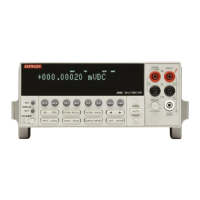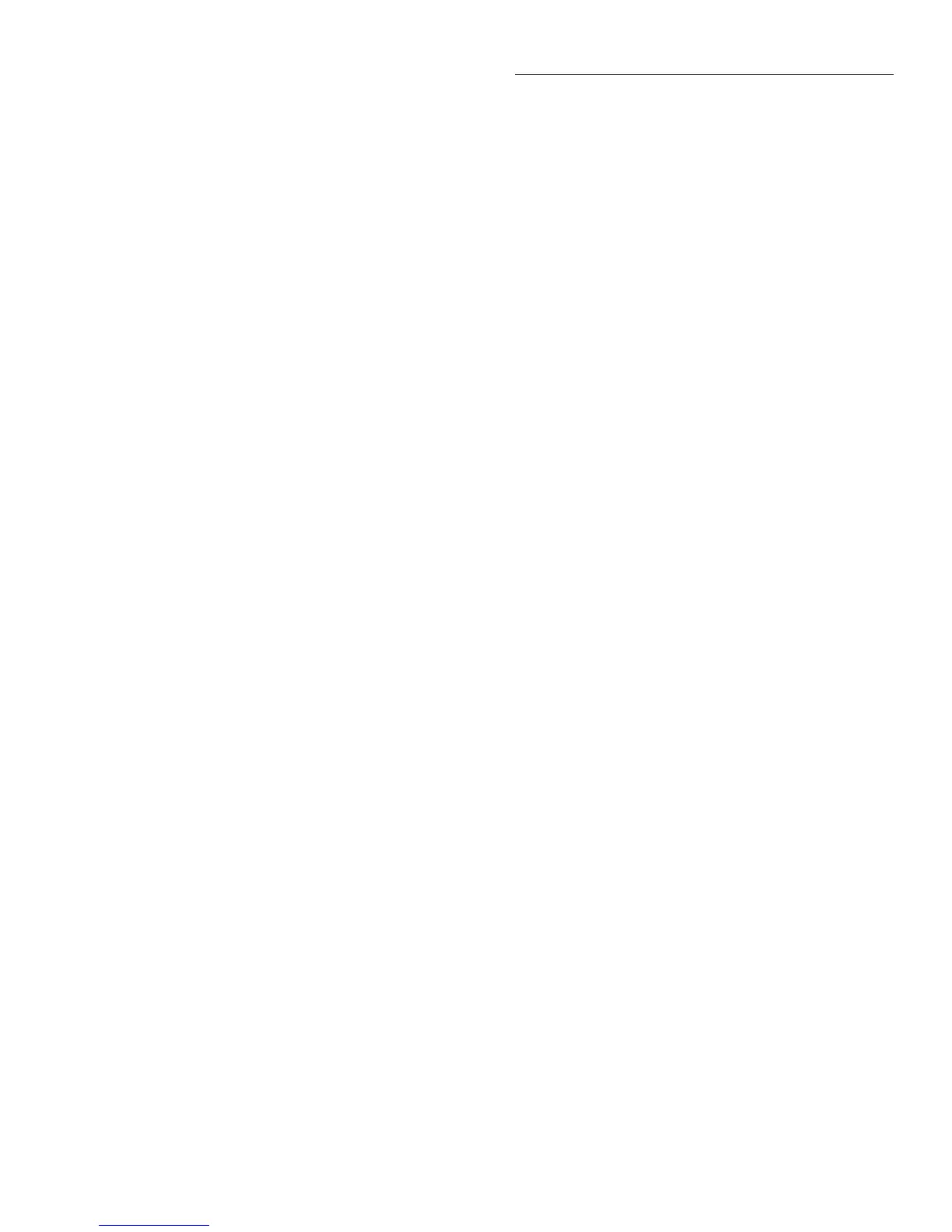IEEE-488 Reference
3-73
These commands are used to enable or disable LIMIT 1 and LIMIT 2 tests. When enabled, the
test sequence for limits will be performed every time the instrument performs a measurement.
Testing is performed in the following sequence: Low Limit 1, High Limit 1, Low Limit 2 and
High Limit 2. Any limit test (LIMIT 1 or LIMIT 2) not enabled is simply not performed.
Note that when a limit test (LIMIT 1 or LIMIT 2) is enabled, the digital output port cannot be
controlled from the Source Subsystem.
A fail indication (see :FAIL?) for LIMIT 1 or LIMIT 2 is cleared when the respective limit test
is disabled.
PRINT #1, "output 16; :calc3:lim:stat on; stat?" ' Enable LIMIT 1 test and
query
PRINT #1, "enter 16" ' Get response message from
2002
:FAIL?
:CALCulate3:LIMit[1]:FAIL? Read LIMIT 1 test results
:CALCulate3:LIMit2:FAIL? Read LIMIT 2 test results
These commands are used to read the results of LIMIT 1 and LIMIT 2 tests:
0 = Limit test passed
1 = Limit test failed
The response message (0 or 1) only tells you if a limit test has passed or failed. It does not tell
you which limit (upper or lower) has failed. To determine which limit has failed, you will have
to read the Measurement Event Register (see paragraph 3.20.1).
Reading the results of a limit test does not clear the fail indication of the test. A failure can be
cleared by using a :CLEar command, or by disabling the test (:STATe OFF).
PRINT #1, "output 16; :calc3:lim:fail?" ' Query result of LIMIT 1 test
PRINT #1, "enter 16" ' Get response message from 2002
:CLEar commands
[:IMMediate]
:CALCulate3:LIMit[1]:CLEar[:IMMediate] Clear LIMIT 1 test failure
:CALCulate3:LIMit2:CLEar[:IMMediate] Clear LIMIT 2 test failure
These action commands are used to clear the fail indication of LIMIT 1 and LIMIT 2 tests. Note
that a failure is also cleared when the limit test is disabled (:STATe OFF).
PRINT #1, "output 16; :calc3:lim:cle" ! Clear fail condition of LIMIT 1 test.
:AUTO <b>
:CALCulate3:LIMit[1]:CLEar:AUTO <b> Control auto-clear; LIMIT 1
:CALCulate3:LIMit2:CLEar:AUTO <b> Control auto-clear; LIMIT 2
<b> = 1 or ON Enable auto-clear for limit failure
0 or OFF Disable auto-clear for limit failure
:AUTO? Query state of auto clear
Description
Program fragment
Description
Program fragment
Description
Program fragment
Parameters
Query

